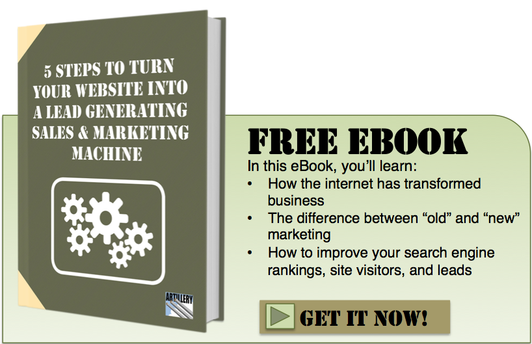You’ve got leads, but are you focusing on the most promising ones? Use this simple approach to more profitably prioritize your B2B sales efforts.

One of the most important roles for B2B marketers is lead generation. Unfortunately for some companies, that’s where marketing’s job description tapers off. Just generate leads. Lot’s of ‘em!
When that happens, marketing can end up focusing more on the quantity of leads than the quality of each one. This is a problem because lead generation is a means to an end. Not an end in itself. The end goal of lead generation is customers, not leads.
There are additional issues as well. When marketing sends every lead to sales for follow-up, it complicates the process. Sales begins sorting through all the leads to qualify them and finds that many leads are of low quality. At times, sales gets discouraged and stops following up completely, missing out on those qualified leads that are ready to purchase.
That’s when you hear sales pointing the finger at marketing and saying things like “the leads are weak!” Then (wait for it…) marketing points the finger back and accuses sales of being lazy and not following up on the leads.
The first step in fixing this problem is lead scoring – prioritizing the leads.
Lead scoring is a way to rank a lead’s interest and readiness to buy, based on a method agreed upon by marketing and sales. Companies can evaluate leads using different methods by giving points and using labels like “hot,” “warm,” or “cold,” or A, B, C, or D.
It will boil down to a combination of “fit” and “interest.” If there is a fit but low interest, marketing needs to continue nurturing the lead. If there is a fit and interest, sales needs to follow-up quickly.
But let’s say you don’t have an automated lead scoring system set up that has your marketing automation software integrated with your customer relationship management (CRM) software.
Another approach to lead prioritization can be based on the interest a lead shows in moving from one buyer stage to another on your website.
You can place all leads in one of three lead categories based on the actions the leads take after the initial conversion:
- Information Qualified Lead (IQL)
- Marketing Qualified Lead (MQL)
- Sales Qualified Lead (SQL)
Information Qualified Lead (IQL)
When a lead first converts, they are often providing their contact information in return for some type of useful information, also known as a top-of-the-funnel offer. Examples include an ebook, whitepaper or tip sheet. The buyer is usually just beginning to research the solution to a problem. They usually don’t know your company and how you can help.
At this stage, the lead is an Information Qualified Lead (IQL).
Using a marketing automation platform, the IQL is directed to a thank you page with a link to download the offer and receives a follow-up email with the same download link. A few days later, the lead receives another email with additional information related to what they downloaded. A few more such emails ensue, similarly spaced out over time.
At each one of those interactions triggered by the first download (thank you pages, emails, etc.), the IQL is also invited to learn more about how your company can help solve the problem related to what they have downloaded.
Examples of enticements toward the next stage include things like free webinars, case studies, free samples, product spec sheets and catalogs.
Many IQLs will take the initial information they need but not move on to the next stage. You can certainly keep in touch with them with email newsletters and new content offers, but based on their actions alone, the IQL can be considered a cold lead and a lower priority for sales follow-up.
Marketing Qualified Lead (MQL)
Let’s say that IQL becomes interested in how you might be able to solve the problem for which they have been researching a solution. They decide to download the information about your company’s product or service.
Congratulations, you now have a Marketing Qualified Lead. The lead is now warm.
As when they were an IQL, your marketing automation triggers a new workflow that generates a thank you page, a thank you email and other follow-up emails with information about their problem and how you might be able to help.
With each of those contacts, you then guide the MQL to the next stage of the journey, the Decision Stage.
To help an MQL advance to the decision stage you could offer things like free trials, demos, free consultations, estimates/quotes or coupons.
If the MQL raises their hand and moves to the decision stage, you now have a Sales Qualified Lead.
Sales Qualified Lead (SQL)
Quick, get sales to call them – they’re a hot lead!
No kidding – studies have shown that the faster sales follows up with an SQL, the higher the closing rate. Plus, the responsiveness sends a powerful message about your company’s customer focus and attention to detail.
By putting your leads into three distinct buckets based on your prospective customers’ actions taken on your website, you can make sure that sales is at least following up with the warmest leads. And spending less time with cold leads.
How To Get Started
The secret to getting ahead is getting started. Your company might already have a lot of the content that can be used to help prospects move through these three stages.
Make a 3-column list, with “Awareness,” “Consideration,” and “Decision” across the top. In each column list the content that you have (or need to prepare) to offer website visitors in order to get them to become IQLs, MQLs and SQLs.


